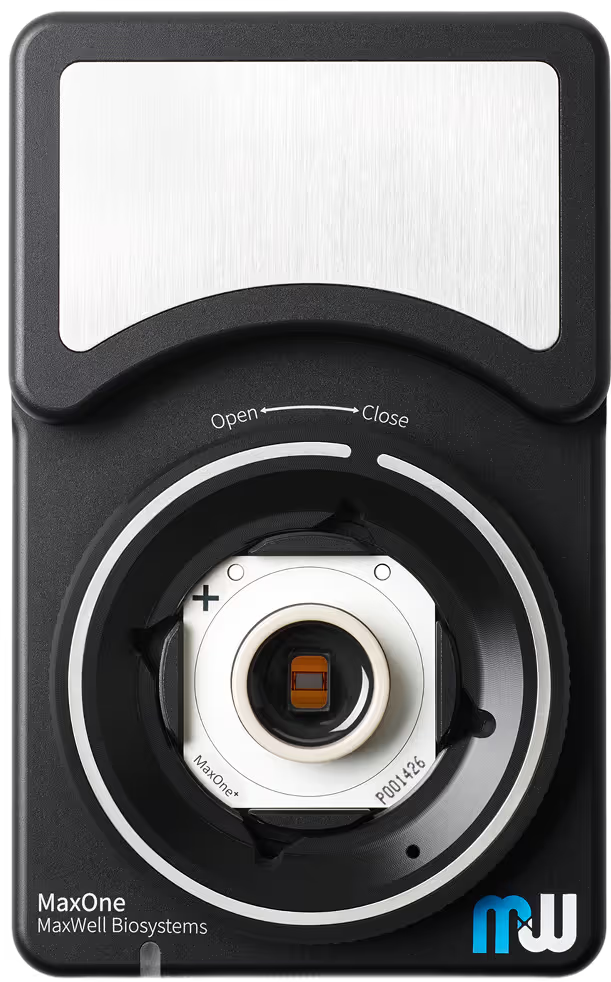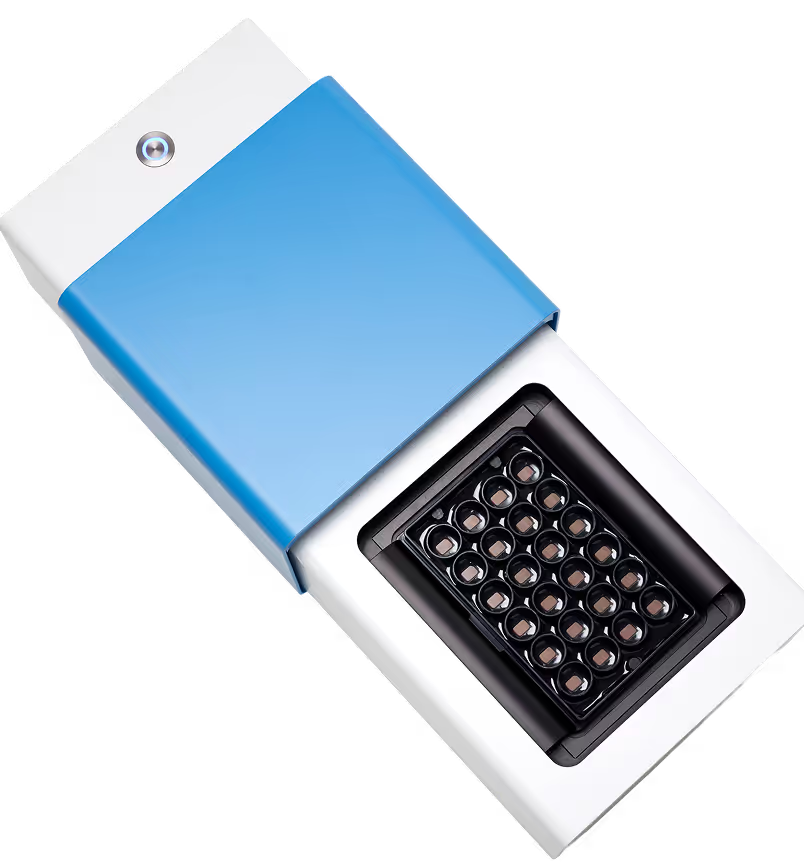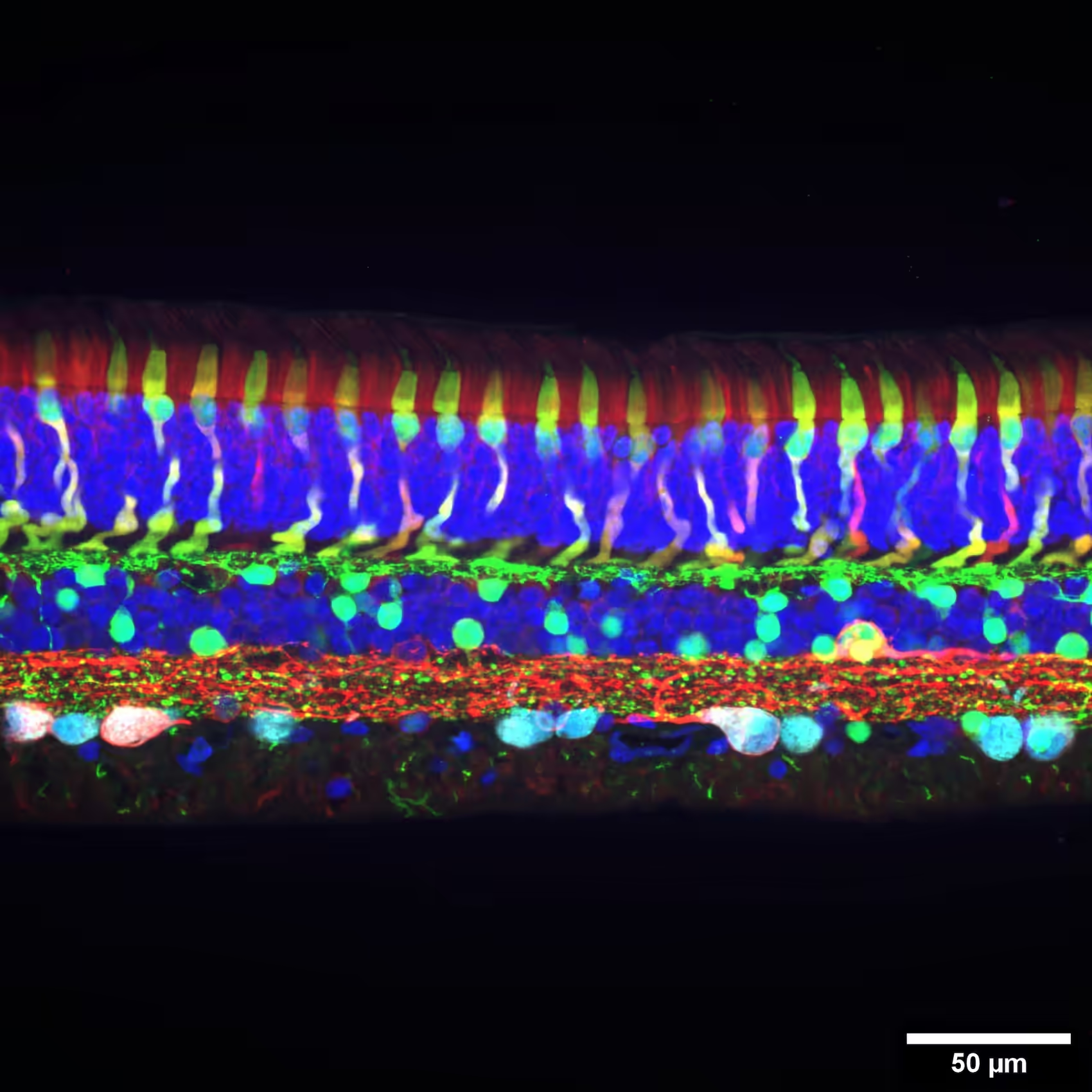
Retina
Every Cell has a Story to Tell.
Let’s Discover Yours
Retina explants offer a physiologically relevant ex vivo model to study visual processing and disease mechanisms. Electrophysiological recordings from sparse retinal ganglion cells (RGCs) reveal functional output of the entire retinal circuit, from photoreceptor input to signal transmission.
Our High-Density Microelectrode Array (HD-MEA) technology provides the density and resolution needed to reliably capture RGC activity and decode visual responses with precision, using supported light stimulation setups and reproducible workflows.

From retinal circuits to single cell precision
Capture high-quality neuronal signals with unmatched single-cell resolution and low noise, enabling you to detect even the smallest RGC spikes to decode population-level visual processing from photoreceptors to output.
Capture RGCs with confidence
RGCs drive visual output but make up just 1–2% of the retina. Reliably capture RGC activity across the whole explant, every time, thanks to our technology, and distinguish functional phenotypes.
Track signal propagation all the way through the axons
Follow signal propagation along axonal paths and unravel how visual information is transmitted, by acquiring reliable action potentials from even the tiniest signals.
Easily integrate light stimulation for effortless functional characterization
Functionally characterize photoreceptor response using precisely controlled light stimuli with our commercialized setup, and HD-MEA technology optimized to reduce optical artifacts.
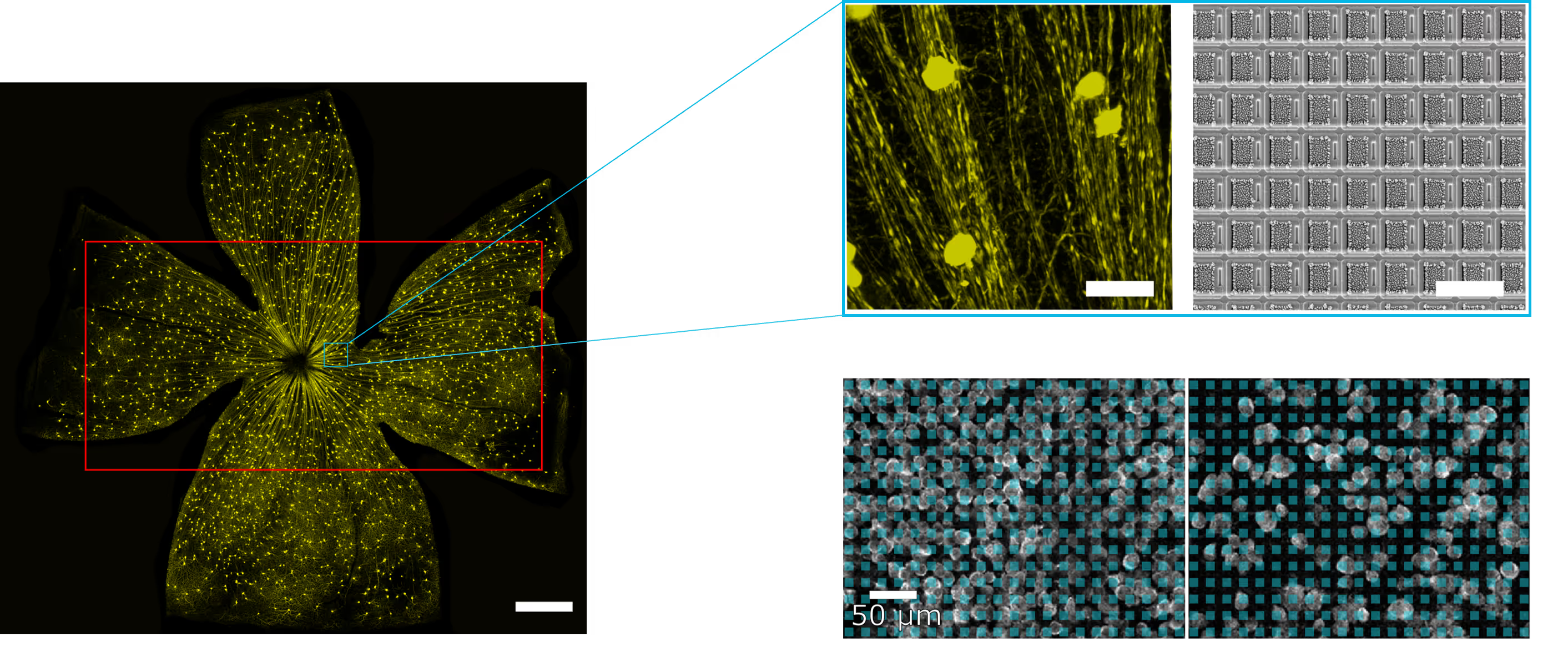
Functional characterization of retina explants
Perform high-resolution acute recordings from freshly prepared retina explant, thanks to the MaxOne single-well HD-MEAs platform. Together with integrated light stimulation devices, discriminate retinal cell types based on their responsiveness to simple and complex light patterns and reconstruct their electrical morphology.
Case studies
Electrical mapping of the whole retina
The sensing area of MaxWell Biosystems’ MaxOne Single-Well and MaxTwo Multi-Well HD-MEA Systems capture a significant portion of the rodent retina. Heatmaps presenting the spontaneous activity of a representative freshly dissected retina explant are shown.
RGC activity was recorded from isolated retinas of C57BL/6 mice in a pre-symptomatic phase of the experimental autoimmune encephalomyelitis (EAE) model of multiple sclerosis
The retinal explant from a CFA (complete Freund’s adjuvant)-treated (control) animal was placed RGC-side down on a MaxOne Chip. The heatmaps represented here depict the activity pattern across the array in terms of amplitude (top) and firing rate (bottom), showing spontaneous RGC spiking recorded across the sample. RGC activity was recorded in dark conditions at room temperature, with the retina maintained in continuously oxygenated AMES medium (USBiological, #A1372). The optic disc and peripheral regions were preserved to ensure axonal integrity. Gentle pressure via the permeable MaxOne Tissue Holder ensures stable electrode contact.
Courtesy of Dr. Filippo Galluzzi, Istituto Italiano di Tecnologia (IIT).
Classification of RGC based on light-stimulation
Identify and functionally dissect specific RGC populations, based on their light-evoked response, thanks to our HD-MEA technology. Four populations of RGCs are highlighted, each with a unique response profile to the light stimulus provided.
Response to light stimulus of individual foveal RGCs in an ex-vivo human retina from a donor
Top: Temporally modulated full-field ON/OFF contrast light stimulus used to probe RGC responses.
Bottom: Raster plot showing light-evoked spike responses from individual foveal RGCs. Each row represents a single neuron; each dot marks an action potential. RGCs were functionally classified based on their temporal firing pattern. Cells are grouped and color-coded by response type, reflecting their functional diversity.
Courtesy of Dr. Annalisa Bucci, postdoctoral researcher in the Quantitative Visual Physiology Group led by Dr. Felix Franke at the Institute of Molecular and Clinical Ophthalmology Basel (IOB)
Label-free reconstruction of RGCs and their axons
Reconstruct the electrical morphology of retinal ganglion cells and investigate their structural and functional features within a single experiment. Representative RGC from different retinal regions are characterized based on reconstructed axonal trajectories and the speed at which action potentials propagate along them, made possible by the subcellular resolution of our HD-MEA technology.
Tracking axonal action potential propagation in RGCs
Top: (Left) Human retina isolated and flattened post-enucleation. (Right) Successive frames show action potential traveling along an exemplary axon across the electrode array. The aggregated frames yield the spatial profile of the average action potential waveform along the axonal trajectory.
Bottom: (A) Electrical images of representative RGC axons from peripheral (top) and foveal (bottom) regions. Peripheral RGC axons project toward the optic disc in near-linear paths, while foveal RGC axons follow curved trajectories around the foveola. Colored squares indicate electrodes detecting action potentials, with color denoting voltage amplitude. (B) Average action potential waveforms recorded at increasing distances from the soma at the selected sites shown in A as black squares. (C) Axonal action potential propagation speed for the different RGCs in A.
Courtesy of Dr. Annalisa Bucci, postdoctoral researcher in the Quantitative Visual Physiology Group led by Dr. Felix Franke at the Institute of Molecular and Clinical Ophthalmology Basel (IOB).
Related to this topic: Bucci et al., Nature Neuroscience, 2025.
Relevant
Applications
Relevant Biological Models
Resources
Solid-State Nanopores for Spatially Resolved Chemical Neuromodulation

Suppression without inhibition: how retinal computation contributes to saccadic suppression

Cell Types of the Human Retina and Its Organoids at Single-Cell Resolution



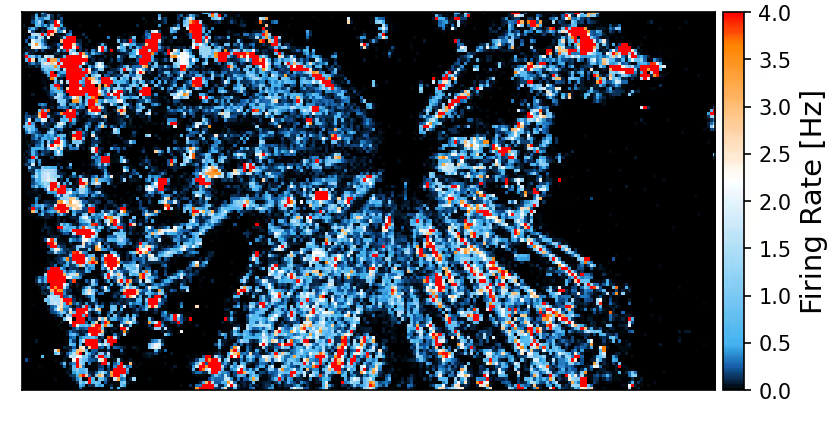
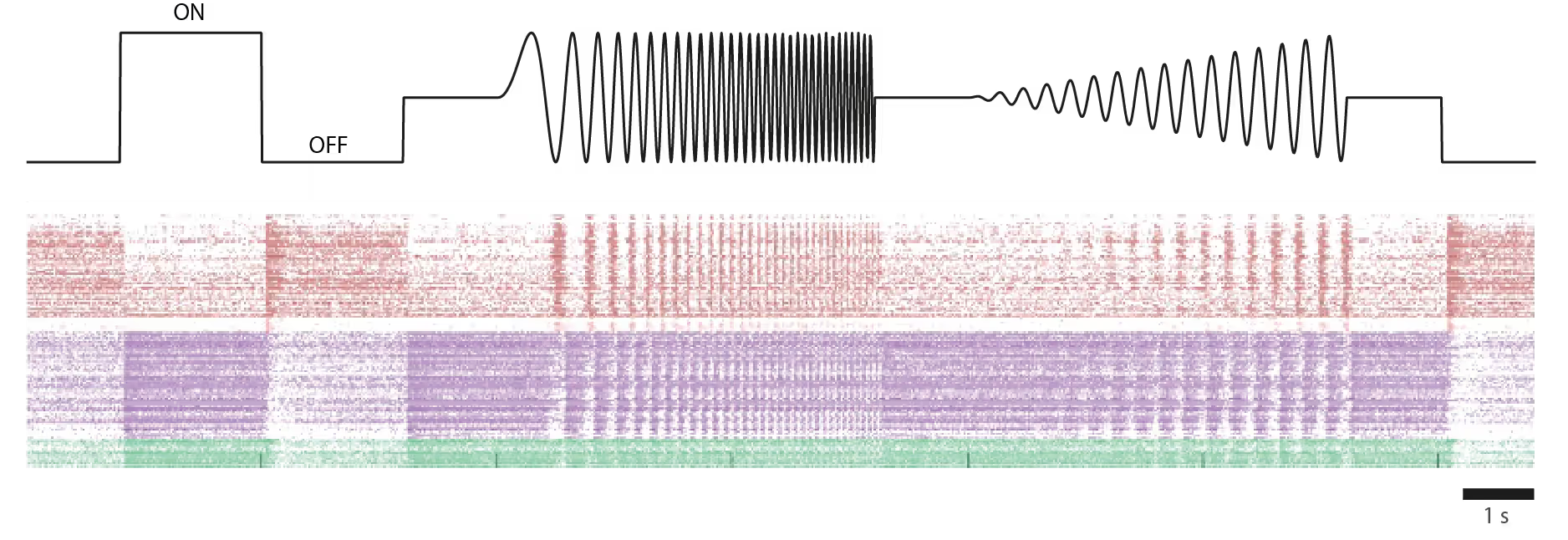

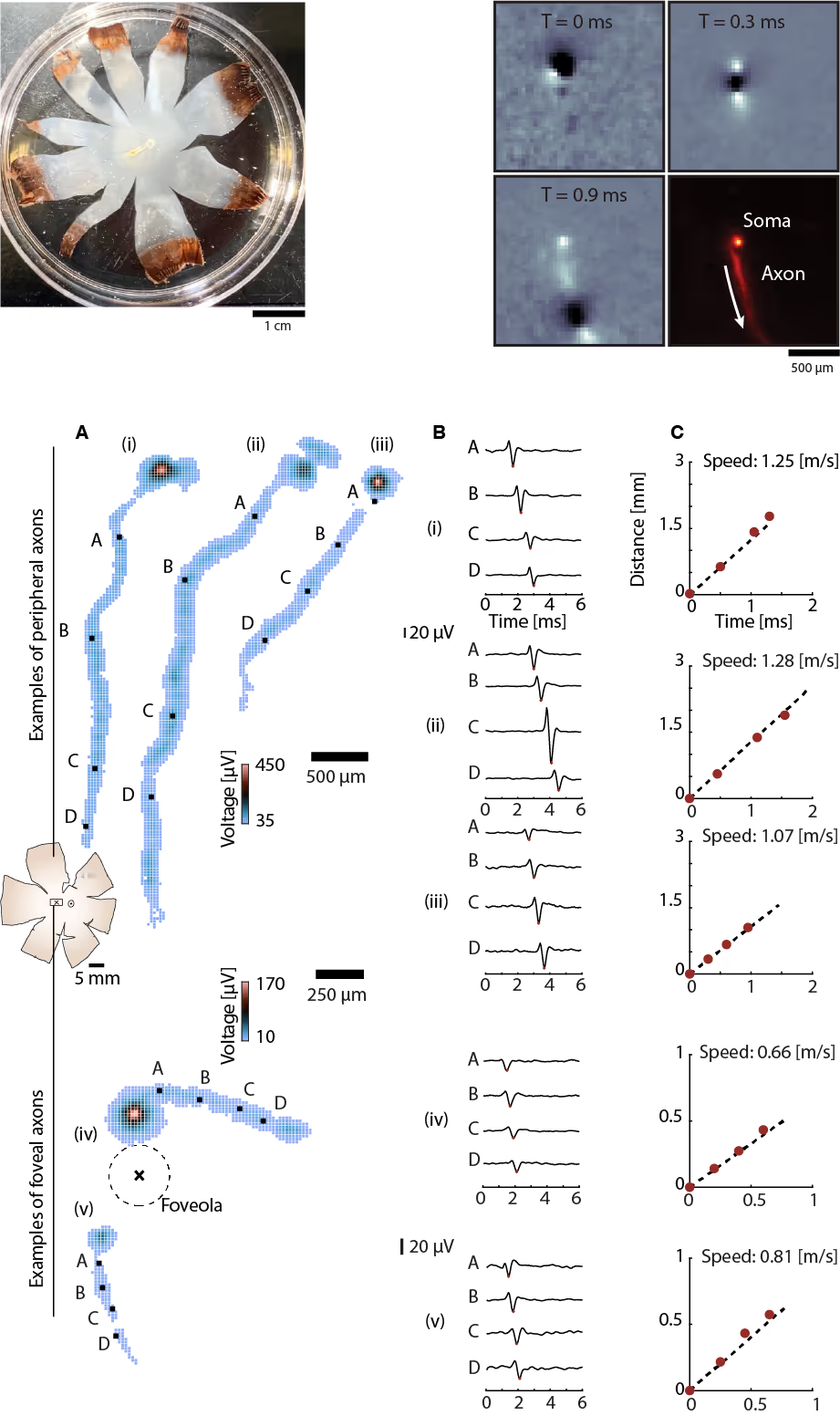
.avif)
